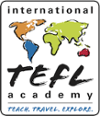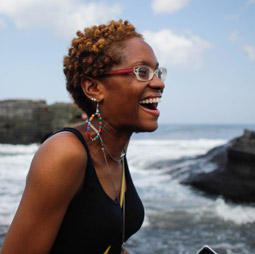Top 10 Things To Do While Living & Teaching in Yakutia, Russia
Kristine Bolt, a graduate of the International TEFL Academy (ITA), shares her experience on the top 10 must-see attractions in Yakutia, Russia, specifically from the perspective of an English teacher.
Written By: Kristine Bolt | Updated: July 11, 2023
Written By: Kristine Bolt
Updated: July 11, 2023

I don't know how anyone could ever be bored living in Yakutia, not if they embrace the climate and aren't total cheapskates.
You guessed it, the time has come for me to give you the top ten list of things to do here. Nine of the items on this list are things to do in Yakutia but at the end, I've added one to-do for Siberia, part of which isn't in Yakutia.
I've presented this list in order of season so please don't assume that any one of these things is better than the others. I've enjoyed every single one of them myself. Where possible, I've put the cost of the excursion in Russian rubles, ₽. One ruble equates to about US$60.
Read further: Teach English in Russia
So here we go!
Winter
1. Dog Sledding
"Mush!"…is not at all what I said when I went dog sledding during the first winter I lived here. Not once. In fact, it didn’t even occur to me to say it. I did scream in terror quite a bit, though. I also laughed, whooped and silently prayed. When I had eagerly signed up for this activity, I had visions of sitting on a sled, surveying everything around me, being pulled around by a team of dogs while the driver stood behind me driving the team onward. This was SO not that.
I was assigned my own dog and sled and we got trained in dog sledding for a full...three minutes. Within thirty minutes of arriving at our starting location, we were on our way. Within two minutes of being on our way, we all started falling off our sleds. It took me a whole ten minutes before I fell so I guess I should have felt proud. In any case, by the time we got to the nearby hill, I was ready to turn back because, people, that hill looked like it was ninety degrees straight up! No joke, it was steep. That hill almost caused me to regret going on the adventure but as soon as we made it to the top and the course got less crazy I settled in and really enjoyed the experience. Through the forest we sped, along different trails that were deeply laden with fresh snow. I let go (figuratively; I had to keep a hold of the sled) and flew along the paths, flushed with a rush of exhilaration and whooping at the top of my lungs.
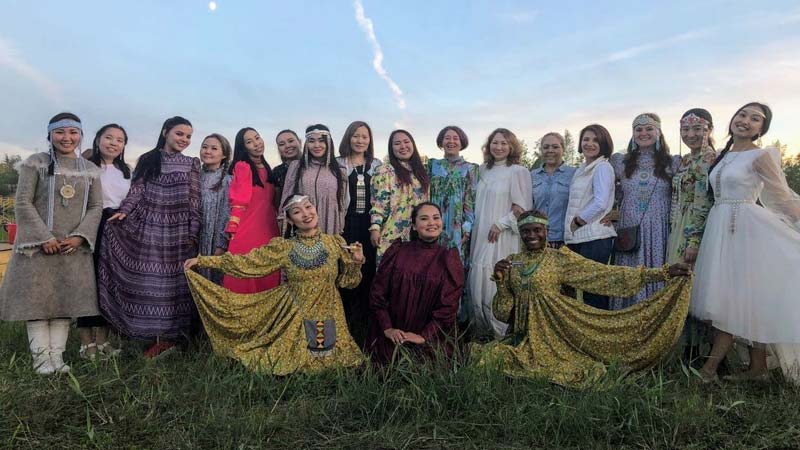
Don't be fooled, though. As fun as dog sledding can be, it’s also a full body workout and don’t let anybody tell you different! When I hobbled through my front door that evening, my ski pants had a few rips in the knees, every muscle in my body ached, my left knee hurt where I had banged it way too often against the bar of the sled and also from falling, and my right wrist hurt enough from my last fall that I had to brush my teeth left handed for the next two days. But I went to bed that night feeling like I was flying along a snow covered path. I lay on my back in bed feeling the crisp early spring air going deep into my lungs and hearing the wind rushing around me. Every ache was worth that almost indescribable feeling of simultaneous exhilaration and peace.
Dog Sledding Cost: 2000₽ ($31 USD)
Read further: The Pros & Cons of Teaching English in Russia
2. Visit Oymyakon
Oymyakon is a region of Yakutia, much like a province in Canada or a state in America. It's also the name of a village in that region. Oymyakon is also known as the Pole of Cold because it’s been officially deemed as the coldest inhabited place on Earth by the Russian government. Another town called Verkhoyansk argues that the title should be theirs but it isn’t; the title belongs to Oymyakon, which holds the record low temperature of -96°F.
The village of Oymyakon is located about a day and a half away from Yakutsk by car in the winter. I say ‘in the winter’ because of the fact that the two rivers that need to be crossed (the Lena River and the Aldan River) freeze during the winter so we drive across them, which is much faster than having to wait for a car ferry. I timed our crossing of the Lena on this trip and it took us about seventeen minutes to drive across it on the ice road. Compare that to the usual one-hour car ferry ride, not counting the time spent waiting around for the ferry to fill up and get underway. I’m sure that driving to Oymyakon in the summer takes longer.
We drove there in seventeen hours, spent three days then took two days (including an overnight stop in Khandyga) to make our way back to Yakutsk. For most of our time in Oymyakon, the temperature hovered around -55°C. That sounds unbearable but, honestly, when you’re properly dressed it really isn’t. I didn’t even have to layer up that much. Most of the time, I had on a t-shirt, a fleece hoodie and my coat, with a nice warm scarf to protect my neck and mouth. I also wore fleece tights, wool thigh-high socks, wool ankle socks and my ski pants, and, of course, my reindeer fur boots. I was so thankful for those boots! My feet still got cold but it would have been much worse if I didn’t have those boots.
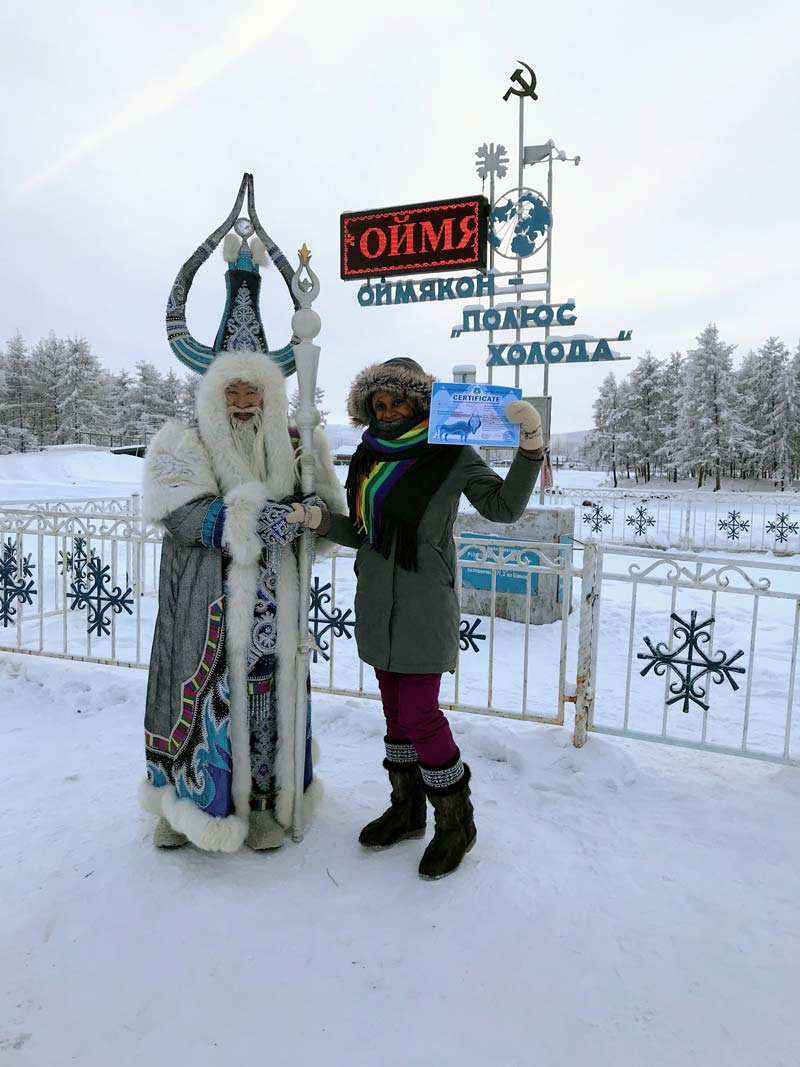 So what's there to do in Oymyakon in -67°F weather? We hung out with Chyskhaan, the Lord of Cold himself, who gave each us a certificate signed by the mayor of Oymyakon saying that we’d been there. We visited both local town halls (on different sides of the village), did a little performance that our group had devised, and handed out toys and other gifts to the children (it was New Year's, after all, and that's a bigger deal here than Christmas). We made silly videos of noodles freezing outside then we threw water in the air and watched it freeze. We went dancing at the local club, which was actually the town hall transformed into a disco. We rang in the new year twice – first on Oymyakon time then on Yakutsk time (they’re in different time zones), both times with champagne and the last time with fireworks. And we ate copious amounts of food at the table of our homestay host. Finally, when we left the village to head back to Yakutsk, we went for a ride on a reindeer-drawn sled. For real, I'm not kidding. Reindeer pulled me across a field and into a nearby forest on a sled and it was AMAZING!
So what's there to do in Oymyakon in -67°F weather? We hung out with Chyskhaan, the Lord of Cold himself, who gave each us a certificate signed by the mayor of Oymyakon saying that we’d been there. We visited both local town halls (on different sides of the village), did a little performance that our group had devised, and handed out toys and other gifts to the children (it was New Year's, after all, and that's a bigger deal here than Christmas). We made silly videos of noodles freezing outside then we threw water in the air and watched it freeze. We went dancing at the local club, which was actually the town hall transformed into a disco. We rang in the new year twice – first on Oymyakon time then on Yakutsk time (they’re in different time zones), both times with champagne and the last time with fireworks. And we ate copious amounts of food at the table of our homestay host. Finally, when we left the village to head back to Yakutsk, we went for a ride on a reindeer-drawn sled. For real, I'm not kidding. Reindeer pulled me across a field and into a nearby forest on a sled and it was AMAZING!
This trip was pretty expensive but totally worth every ruble. I won't quote the cost here because I think individual tour operators need to provide quotes for this directly. I used my favorite tour company, NordStream. You can find them at here. Their site is in Russian but there are six language options at the top of the page.
Read further: What are the Basic Requirements for Teaching English in Russia?
3. Winter Sports
As you would imagine, there is no shortage of winter sporting activities in this winter wonderland. I can speak firsthand about skiing, snowboarding and ice skating. We can go ice skating at the local ice rink, which is open every day of the year and is frequented by budding figure skaters, hockey players and leisure seekers. Or we can go skating on one of the frozen lakes around town at the end of winter when it gets warm enough to be safe doing that kind of thing outside. I've been ice skating exactly three times in my life, all of them since I moved here. I'm so bad at it. So bad. But I feel compelled to try and learn so I bought my own skates (although you can rent them at the local indoor ice rink), which have been barely used. Still, hope springs eternal.
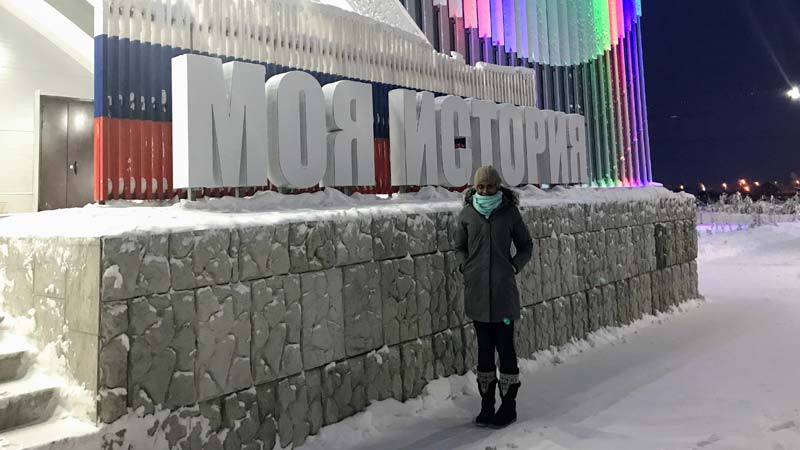
As for skiing and snowboarding, although some snowboarding takes place on a hill here in town called Chochur Muran, I think these activities are mostly done at a park called Tekhtyur, which is about a forty-five minute drive from Yakutsk. It's located just outside the village of the same name. I first visited Tekhtyur with a group of about ten people late in the winter when the temperatures had warmed up to about -20⁰C. Let me just put it out there up front: I didn’t snowboard and I didn’t ski when I visited Tekhtyur.
That’s because I wanted to spend the day mentally relaxed, not trying to keep from breaking my leg. I’ve never snowboarded in my life and I skied once almost twenty years ago when I was in grad school in northern California. That time, I almost went off the side of a cliff back ways (don’t ask). Balancing activities like skiing and snowboarding aren’t particularly fun for me because I’m physically awkward, and I’m OK with that. I’m only into ice skating now because I’m determined to experience the joy of gliding along a frozen lake. Careening down a hillside, not so much.
Still for anyone who is into these types of activities, you can find them here in Yakutsk.
Indoor Ice Skating Cost: 200₽ ($3 USD) (outdoor ice skating is free)
Skiing/Snowboarding Cost: I'm not sure of the cost but you do need to bring your own gear.
Spring/Summer/Autumn
4. Hiking
From spring to autumn, there are hikes taking place in the countryside surrounding Yakutsk. Actually, I think there's the occasional winter hike as well but I haven't been on one of those. For these, I use my favorite tour company, NordStream, which has a hike just about every weekend when it's not winter. I've been to Kangalasskiy Mis and Tabaginskiy Mis to try and catch the spring ice break on the Lena River (we missed it), and I've done a short hike in Bolshoi Keteme.
Hiking Cost: between 700₽ and 1000₽ ($10 - $15 USD)
5. Camping
As soon as it's safe to do so, camping season starts here. In fact, it was here in Yakutia during my first spring that I went on my first real camping trip ever. I’d camped twice before but this was an authentic level of camping that I hadn’t experienced yet. Usually these are weekend camping trips where we leave the city late on Friday afternoon and return on Sunday afternoon. I've gone camping on islands in the Lena River and the Amga River. Both have been amazing experiences that I can't adequately describe here. In fact, I'll just say it straight: I officially love camping because of my experiences of it in Yakutia. I'm fairly certain that I'm not good at it but I don't care; I love it just the same!
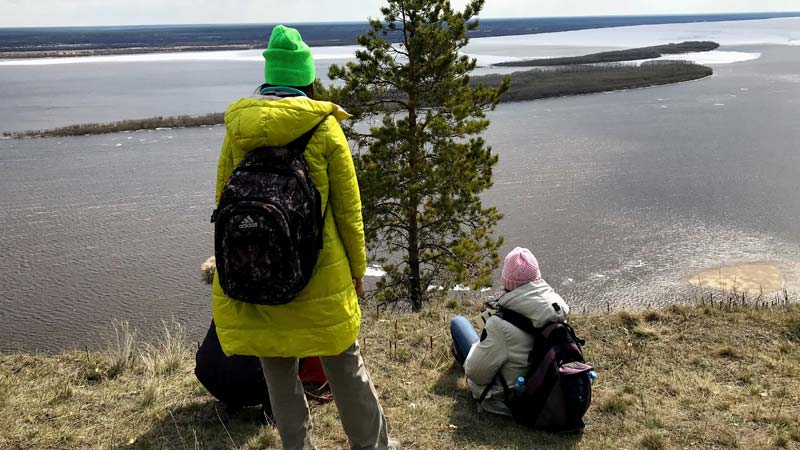
I love camping here because every single camping trip I've been on has brought me into contact with more kind and generous new acquaintances. As I said in another post, Yakutians are in a class by themselves when it comes to being consistently wonderful so I love spending time in situations where I get to experience them. Yakutia itself is also a place of blinding natural beauty and I love to spend time outdoors in God’s creation, which is in no shortage here.
Weekend Camping Cost: anywhere from 4500₽ to 8500₽ ($70 - $130 USD) depending on the destination and the size of the group
6. Adventure Park
The one adventure park that we have here that I know of is called Norway Park. It closes for the winter and is really fun if you go with a group of friends. It's about a thirty minute drive out of town and is located near the village of Tabaga. On my one visit so far, I went at the start of the summer with two friends. When we arrived at the park, we paid our entry fees, got decked out in harnesses and helmets, and went through training. This included learning the right way to clip and unclip ourselves to and from the various lines that we would traverse through the treetops. It also included learning the right way to go along the zip lines, and how to tell the maximum number of people that were allowed at one time on one obstacle at any given section of the course. We were also told that there were four different courses to go through, with increasing difficulty levels. Green was the easiest course; blue was more difficult than green; red was more difficult than blue; and finally, the most difficult course was black. They all took place entirely in the trees.
My friends and I made it through the green and blue courses well enough then we made our way to the red course. By this time, I was having deep existential conversations with myself about why I was even doing this but I continued on. I'm happy to say that I made it through the red course; I made it by the skin of my teeth but I made it. We didn't tackle the black course because by the time the red course spit us out we were mentally and physically done. But we resolved to return some time in the future to take on the course again.
Adventure Park Cost: 1000₽ ($15 USD) and bring your own food/picnic.
7. Yhyakh
This is the summer solstice festival in Yakutia. I think it would be remiss of anyone who visits here during the summer to miss this festival, where everything about traditional Yakutia is on display, from food to dress to sportsmanship. I attended my first yhyakh last summer. It actually takes place in the towns and villages across the republic at different times during the month of June but the largest one is in Yakutsk. That takes place over two days on the weekend closest to the actual summer solstice. There’s a huge field just outside of the city that’s the designated yhyakh staging ground. My understanding is that nothing else takes place there, and I can see why. It’s such a large event that permanent structures have been erected at the venue. Some families bring their children, set up tents and camp out all day and night.
One of the main events of yhyakh is the opening ceremony. The entire event takes place in Russian and Sakha so I didn’t understand most of what was happening. Yakutians are into shamanism so there were several shamans doing stuff with a fire. There were also lots of children and teenagers dancing in formation and a few animals were lead through the proceedings. It was all quite a spectacle.
Throughout the day many performances and ceremonies took place, like khomus performances and okhuohai dances. We'll talk about khomus later. There were also several performances of okhuohai dances, which is a traditional Yakutian circle dance with an okhuohai caller singing lyrics and the other participants repeating the lyrics, their arms linked together and moving clockwise in a circle. The last major event of yhyakh took place in the wee hours of the second morning; it was the sun ceremony. Yakutians believe on receiving energy and good luck from the power of the sun so a very important part of yhyakh is the ceremony that welcomes the new sunrise. At that time of year, we're still firmly in the middle of white nights when the sun doesn't set so sunrise is officially at around 2:30 am. This ceremony took place in another field; there were more rituals performed by the shamans and dancers. The ceremony ended with a gigantic okhuohai dance and suddently yhyakh is over for another year.
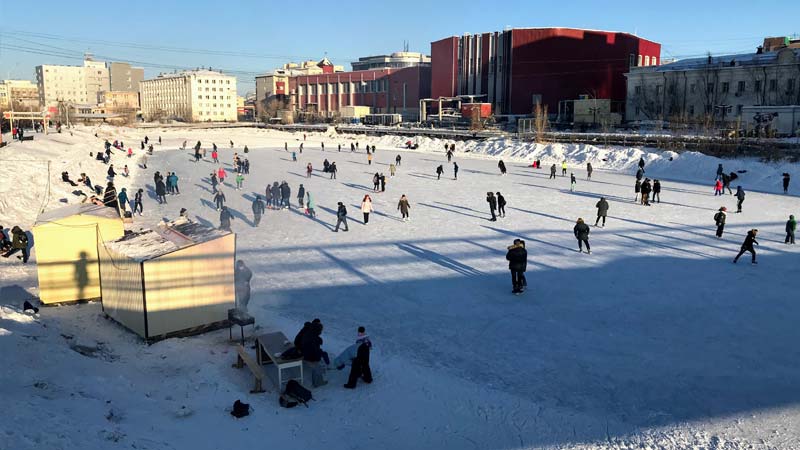
The cost of attending yhyakh depends on how much food you eat and what mode of transportation you take there. Our school hired a bus and had a large tent, and we all brought food to share so I can't really say how much to budget for yhyakh.
Any Season
8. Museums
There's no shortage of interesting museums to visit in Yakutsk. The most prominent are the Khomus Museum, the Mammoth Museum, the Russia My History Museum, and the Kingdom of Permafrost (that last one isn't technically a museum but I thought it merited being on this list. There is a Permafrost Museum, though I haven't visited it yet.).
Khomus Museum: That’s the local name for what’s called a jaw harp or a Jew's harp in other places. It's the national instrument of Yakutia. I never knew about this instrument before I came to Yakutia but it exists in different forms all over the world. The first time I ever heard it being played was at this museum. My attention was immediately captured, so much so that within a few weeks I had bought my own khomus and was taking lessons from a colleague. The museum houses the largest collection of khomuses in the world.
Mammoth Museum: This museum is pretty impressive. On my one visit, we started our tour by watching a video of an excavation of a mammoth from about five years ago, and what was even more impressive was that the archaeologist who was giving us the tour of the museum was on that dig. He was right there on the video! To get to the dig site, they had to use snowmobiles and go three days into the wilderness. Then they spent three days digging up the mammoth, which was encased in ice and permafrost, and was therefore pretty well persevered, including some of its blood, flesh and hair. These were sent to China for genetic work. After the video, we took a turn around the small but very well curated museum, the crowning glory of which is a reconstructed fake mammoth, designed from the skeleton of a mammoth they found years ago and which is displayed in another section of the university.
Kingdom of Permafrost: Yakutsk is built on a foundation of permafrost; the soil and rock beneath the city down to several hundred meters remain below freezing year-round. The Kingdom of Permafrost is basically a series of caves and tunnels that were dug during the last world war to store food and weapons for the military. Today, the naturally ice-encrusted tunnels remain and ice sculptures have been added, I suppose to improve make the attraction interesting. I've been twice now and I've had fun each time.
So what to expect? Well, It’s a natural freezer down there. We go through a door from the entrance office into an anteroom then through another door which leads into the tunnels. As soon as we enter there, we can feel the dramatic change in temperature. The first time I went, which was at the end of summer, the temperature in the tunnels was around -7⁰C while the temperature in the outer office was about 15⁰C. The ceilings, walls and floors are lined with frost from the cold. In case I'm not being clear, let me restate: they don’t put the ice there and keep the place temperature controlled for effect. It’s all just the natural temperature and frost that occurs underground in this far northern region of the continent.
Russia, My History Museum: This is a really well done museum and can only be fully appreciated over multiple visits. I've only been there once so far but I need to go back because I was only able to cover a fraction of the displays and exhibits. There are four main rooms covering different eras in the history of Russia and each is chock full of so much information that it will make your head spin. Entry is free but you can purchase an audio tour for about 150₽, which is super helpful.
Average Museum Cost: 500₽ ($7 USD)
9. Lena Pillars
The Lena Pillars are a must-see for anyone who comes to Yakutia. By my second day here, I knew that. It’s like how seeing the Hoover Dam is a must for visitors to Las Vegas or going to the Statue of Liberty is a must for visitors to New York City. If you’ve gone to those places but haven’t done those things, then you haven’t experienced the best that it has to offer. So what are the Lena Pillars? They're a natural rock formation that's also a World Heritage Site. As a Game of Thrones fan who knows that I live beyond The Wall, seeing a natural rock formation that could be the actual wall from fiction was definitely on my to-do list.
I went to the Pillars with local friends late in my first winter here. Our journey took four hours by car and we brought food to share since there are no restaurants nearby. Part of our journey had us driving on the frozen Lena River for about an hour. I said, we drove ON THE FROZEN RIVER!!! This was my first time driving on the winter road and my mind was blown. We were literally driving on the Lena River – one of the longest rivers in the world, a river that flows into the Laptev Sea of the Arctic Ocean – for almost an hour. We stopped, we took photos, I wrote my name in a snowbank, then we got to a turnoff in the winter road and we veered left directly across the river to the other bank, where the pillars are located.
After checking in at the ranger station and using an outside pit toilet for the first time ever at -40⁰C (I used the outside toilet in Oymyakon at -55⁰C this past January so at this point it's no biggie for me), we set off on the walk that would take us to the lookout point atop the pillars. At first, it was like a lovely jaunt through the woods. Then the climbing up steps began and it wasn’t such an easy jaunt anymore. Soon enough, we were huffing and puffing our way up through the winter wonderland of the surrounding woods. I can’t speak for anyone else, but under my coat, hat, scarf, sweater, undershirt, fleece tights and thigh high wool socks, I was sweating like a pig. I had to push back my hood a few times just to give my head some fresh air. In any case, we persevered and finally made it to the top. It was stunning and absolutely worth the climb.
After wandering around at the top for a while, during which time I wished I could build a cabin up there to live in, forever wrapped up in the fairy tale winter beauty, it was time to start the trek back down. By the time we returned to the base of the pillars, two and a half hours had passed from when we first set out. It was short compared to the four hour drive there and back but it was very much worth seeing.
Lena Pillars Cost: 300₽ ($5 USD) plus food and any other incidental cost like petrol.
Not In Yakutia But Still In Siberia
10. Lake Baikal
This is the only non-Yakutia activity on this list but it truly is a must-do. Lake Baikal, located in southeastern Siberia, is the oldest, largest and deepest lake on earth, as well as one of the clearest. To get there from Yakutsk, it's necessary to fly for about three hours to Irkutsk then drive about three hours from there to Baikal. Last summer, I went on a six-day hiking and camping trip there.
Lake Baikal is gorgeous. I had a great time camping, the guide was great, and overall, I thoroughly enjoyed the experience even though I think it would have been infinitely better had actual Yakutians been on the hike with me (see my notes about camping in Yakutia above). Anyway, we spent six days hiking a total of almost 60 km. Looking at a map, the distance we covered looks short, but I assure you that walking 60 km up, down and around hills over six days toting a heavy rucksack all the way is nothing to sneeze at. My right clavicle and scapula were feeling the effects by day 2. Despite the missing Yakutians, I enjoyed most of what I saw during those six days. We walked across forests and mountaintop plateaus. We picked our way zigzag up steep slopes with me feeling like an awkward mountain goat the entire time. We walked through the Siberian steppes where there was nothing but grass as far as my eyes could see.
At one point, to get around an inconvenient cliff, we even had to shed our pants and boots. Yup, you read right; we were only wearing our underwear and t-shirts, and had our boots tied to our rucksacks. It was unexpected but thank God I was fully prepared, if you know what I mean, ladies. Then we had to walk about one hundred meters through the bitingly ice-cold water, one hand clinging to the cliff on our left and the other hand gripping a walking stick to help keep us from getting knocked over by the surf, which was pretty rough that day. I’m marking that experience as one of the two best parts of the entire trip. It sounds weird but it was pretty cool (pun not intended) once I got out of the freezing water.
The other of the two best parts of the trip came on the evening of the second day when we camped on a rise just above a beautiful rocky beach. The other members of the group spent a few hours that night chatting around the campfire but I spent most of that time lying on my belly or my back on the beach watching the lightning from a storm that seemed to be pelting the distant opposite shore. Meanwhile, the moon shone on us from a perfectly clear sky. It was phenomenal and not to be missed.
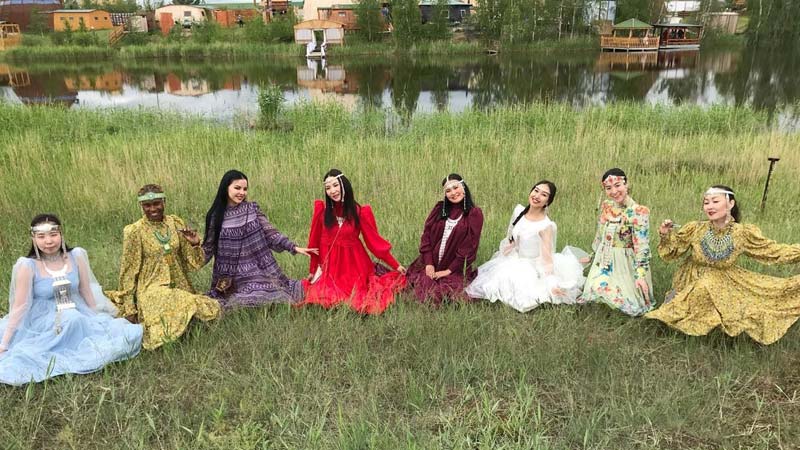
Again, I won't quote the cost of my trip here because I think individual tour operators need to provide quotes for this directly.
So that's my suggested list of the top nine things to do in Yakutia plus one Siberian jaunt. Wade in, it’s wonderful here!
Posted In: Teach English in Russia, Teach English in Asia, Diversity Abroad, Teaching Abroad Over 40, Yakutsk
Kristine Bolt
A citizen of Jamaica who holds a Master's Degree in engineering from UC Berkeley, Kristine literally traveled halfway around the world to teach English in Siberia, Russia after earning her TEFL certification online from International TEFL Academy. As an ITA Alumni Ambassador, Kristine has shared her perspectives on a variety of TEFL-related issues to help others with their transition of moving abroad to teach English overseas.
Want to Learn More About Teaching English Abroad & Online?
Request a free brochure or call 773-634-9900 to speak with an expert advisor about all aspects of TEFL certification and teaching English abroad or online, including the hiring process, salaries, visas, TEFL class options, job placement assistance and more.





